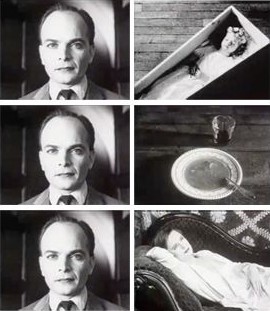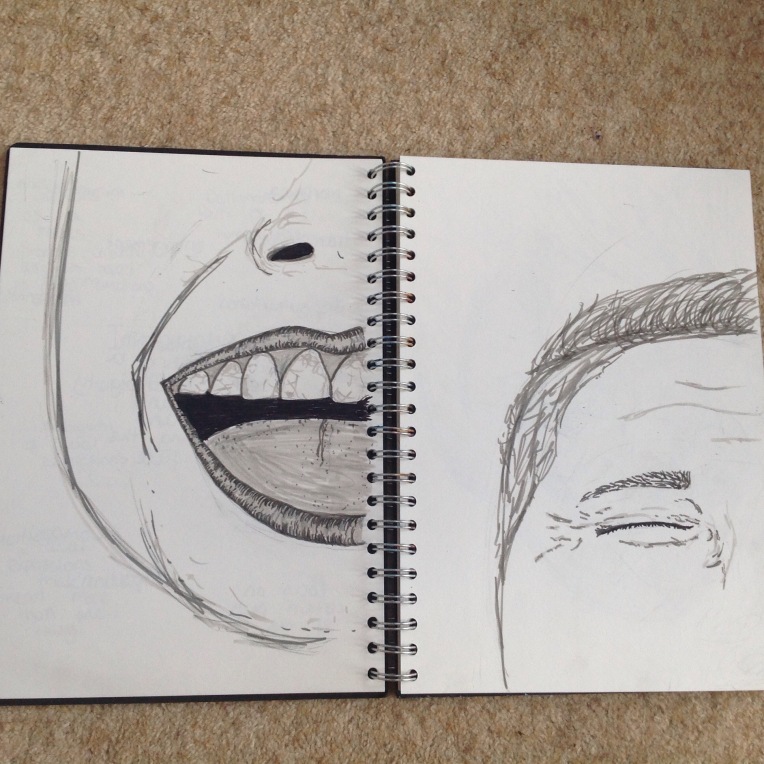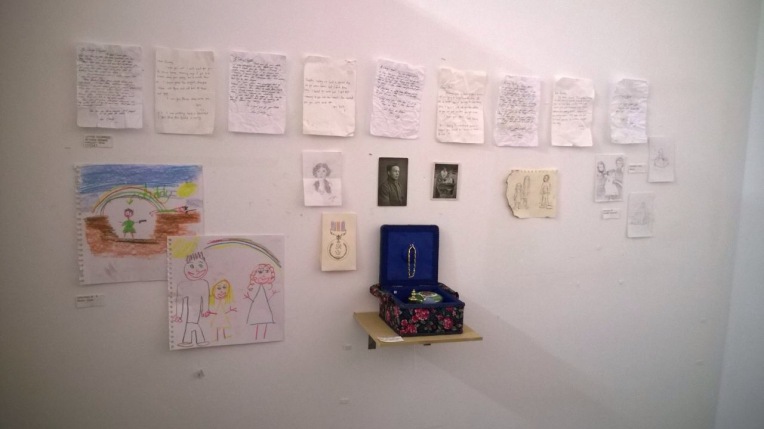The project title that we were given for these two weeks was ‘Persons’ i decided to take a different approach by studying and drawing sections of human faces creating an ambiguous aspect to the emotions shown. After experimenting with creating a sense of ambiguity within human emotions and dehumanising the human face i decided to do some research on artists that worked with facial expressions and ambiguity when i found The Kuleshov Experiment which is something that i took an interest in straight away as it entirely fits in with the subsection of the project that was give.
The Kuleshov effect is done through a video of montage of the same image in different view points. In his experiment, Kuleshov cut an actor with shots of three different subjects: a hot plate of soup, a girl in a coffin, and a pretty woman lying in a couch. The footage of the actor was the same expressionless gaze. Yet the audience raved his performance, saying first he looked hungry, then sad, then lustful. This is something that i can relate to with the ambiguity of facial expressions within my work. The Kuleshov effect has inspired me to focus more on the ambiguity of each particular part of the human face to create an image in which the emotion is entirely ambiguous to the viewer.
The Kuleshov effect was largely successful, In a 1964 interview for the show Telescope, Alfred Hitchcock called this technique “pure cinematics – the assembly of film.” Sir Hitchcock says that if a close-up of a man smiling is cut with a shot of a woman playing with a baby, the man is portrayed as “kindly” and “sympathetic.” By the same token, if the same shot of the smiling man is cut with a girl in a bikini, the man is portrayed as “dirty.”


